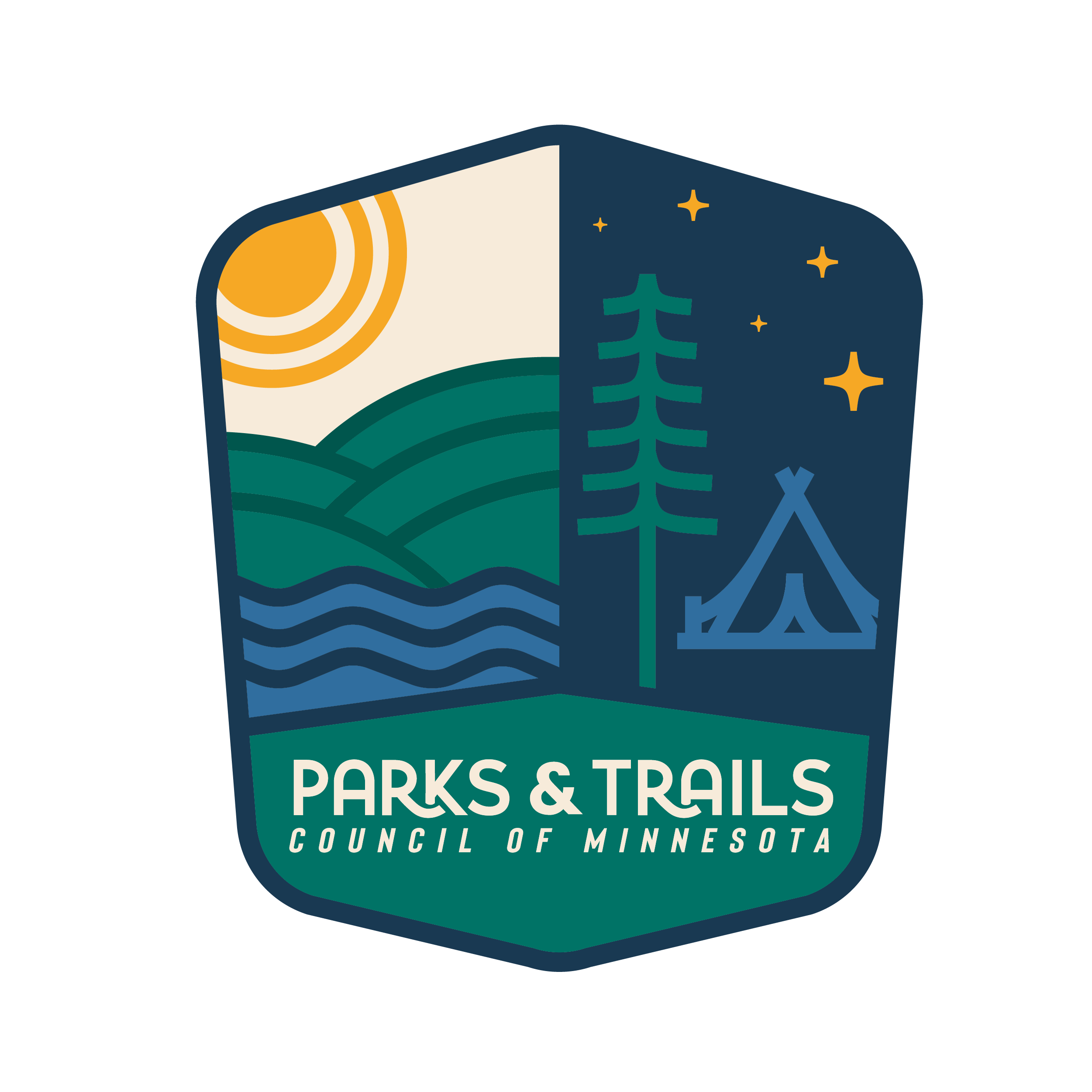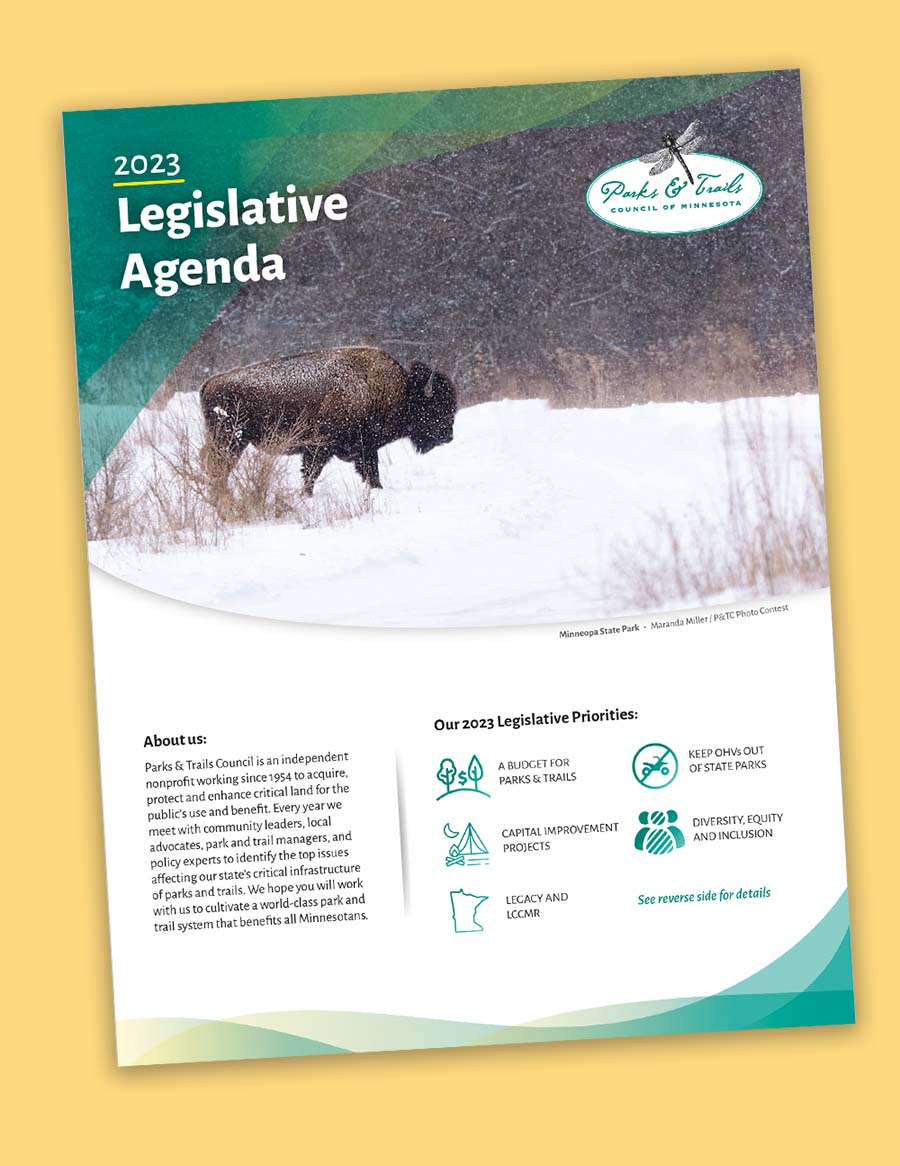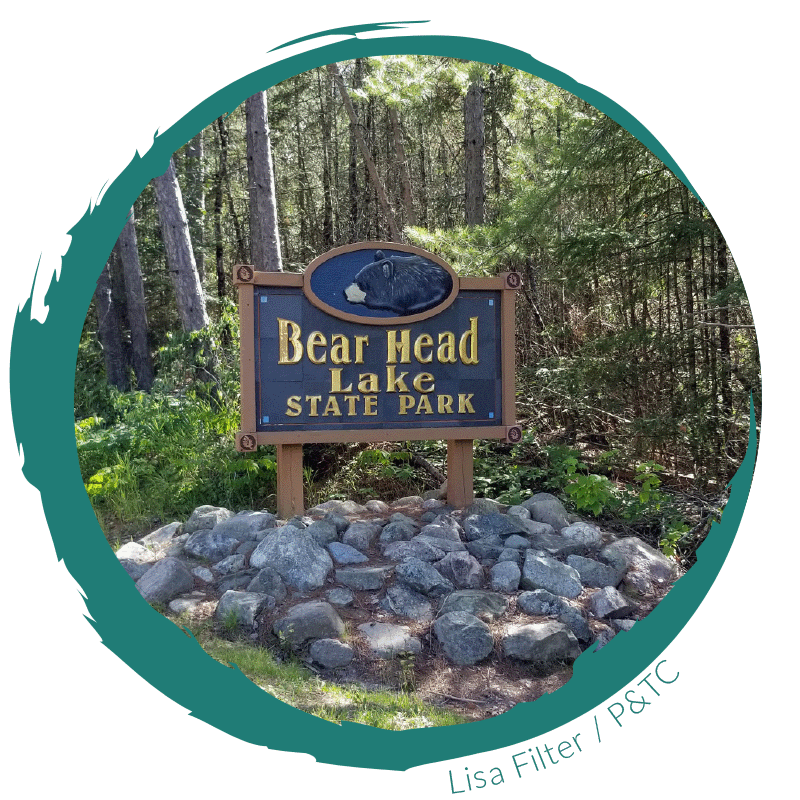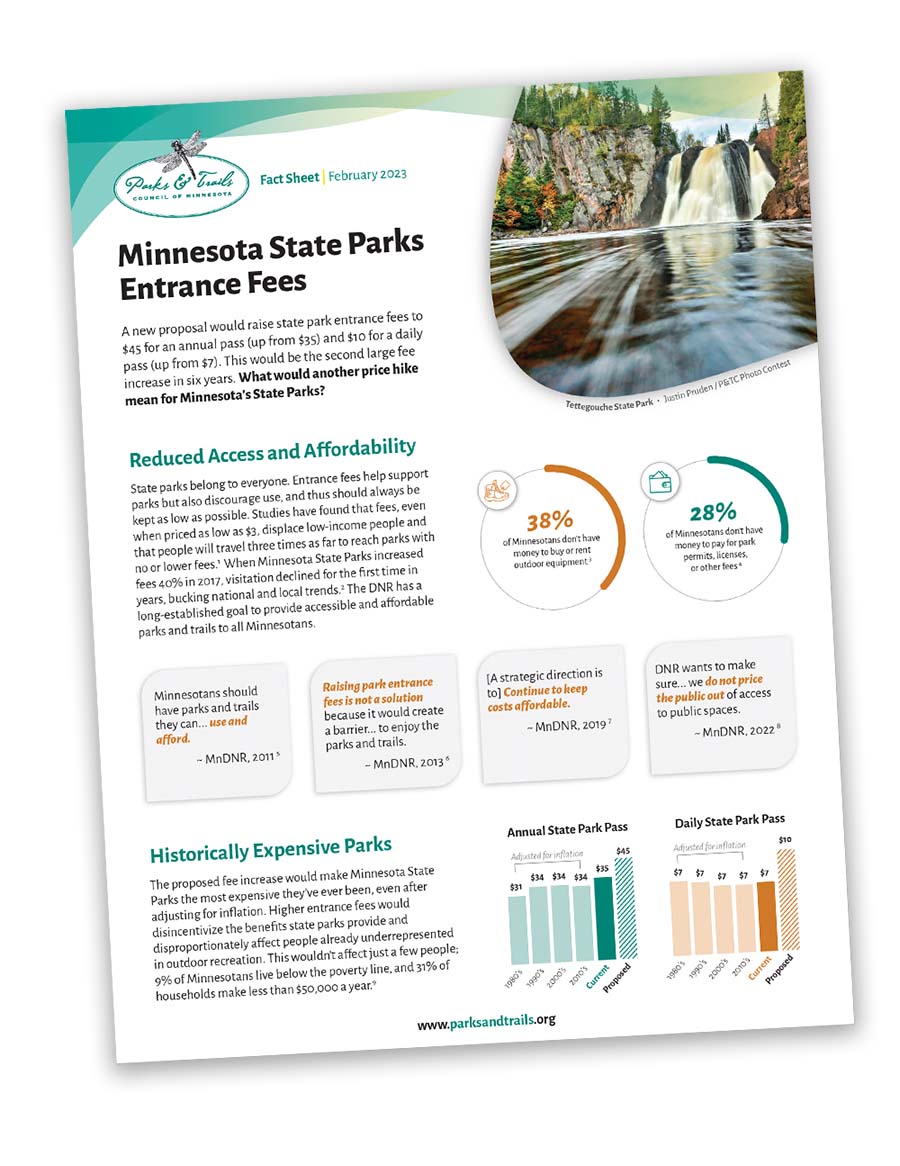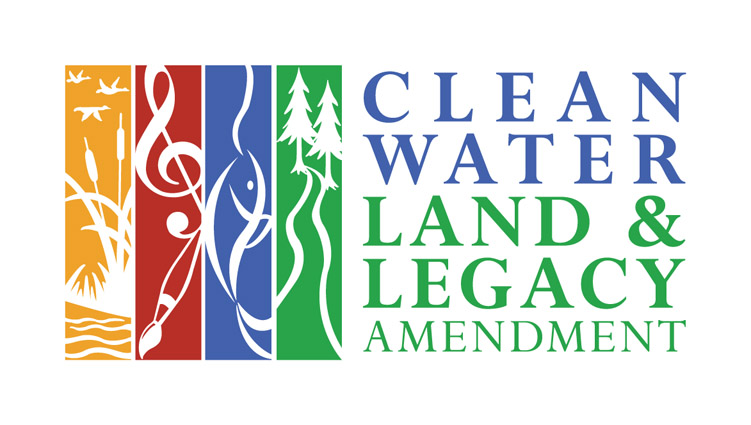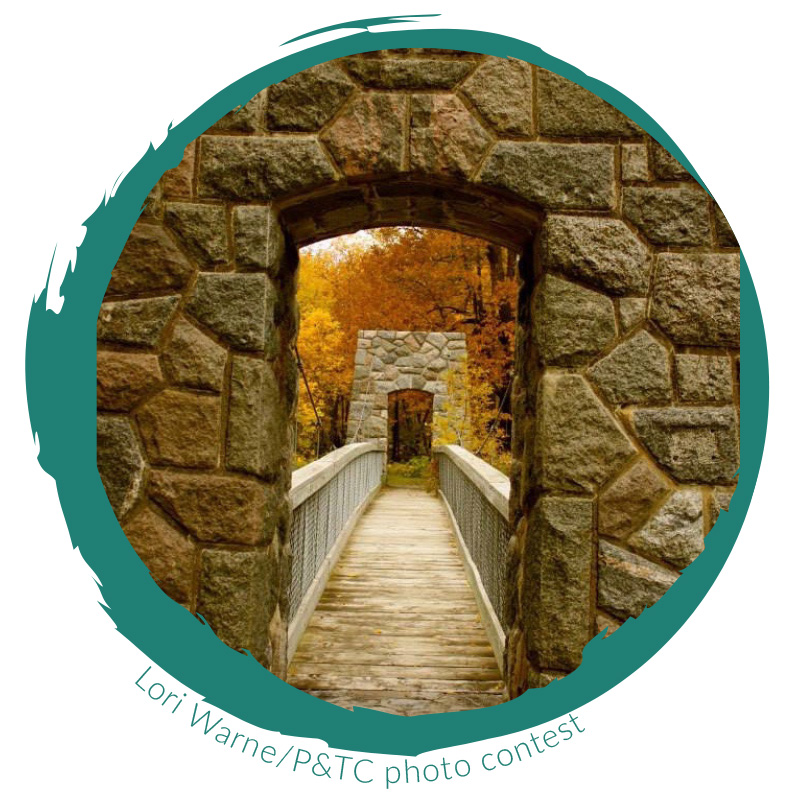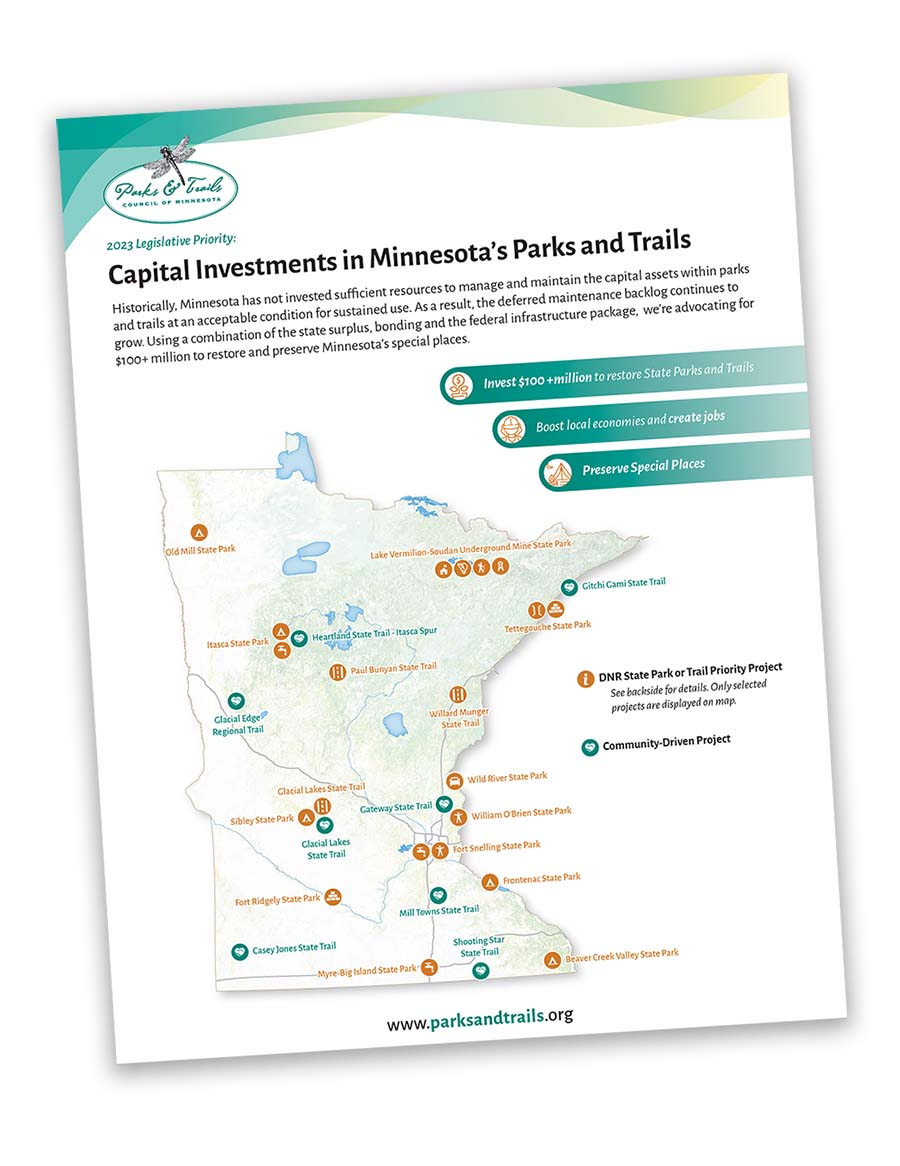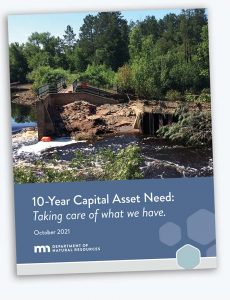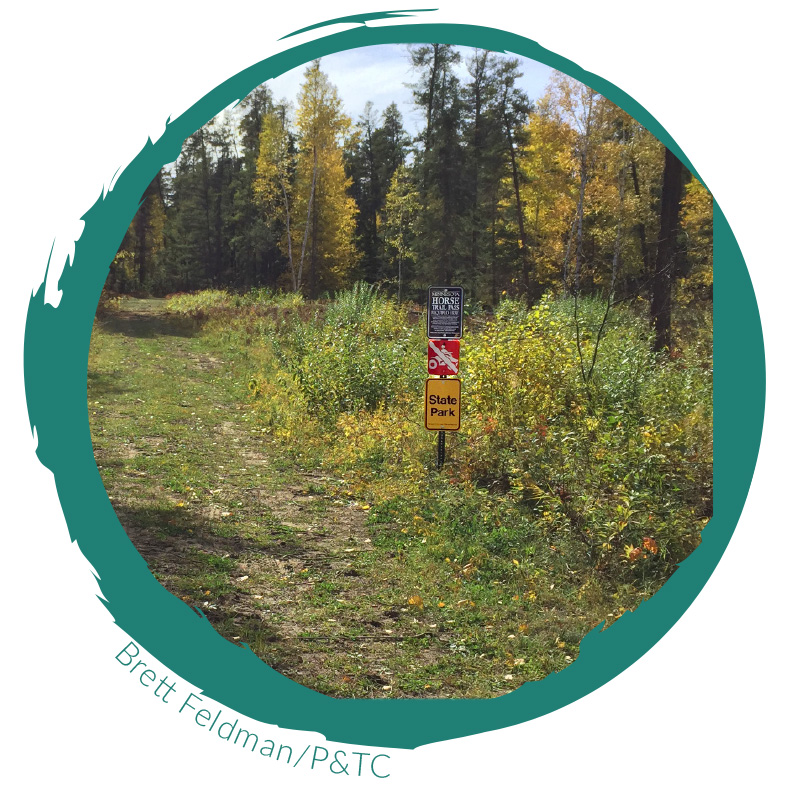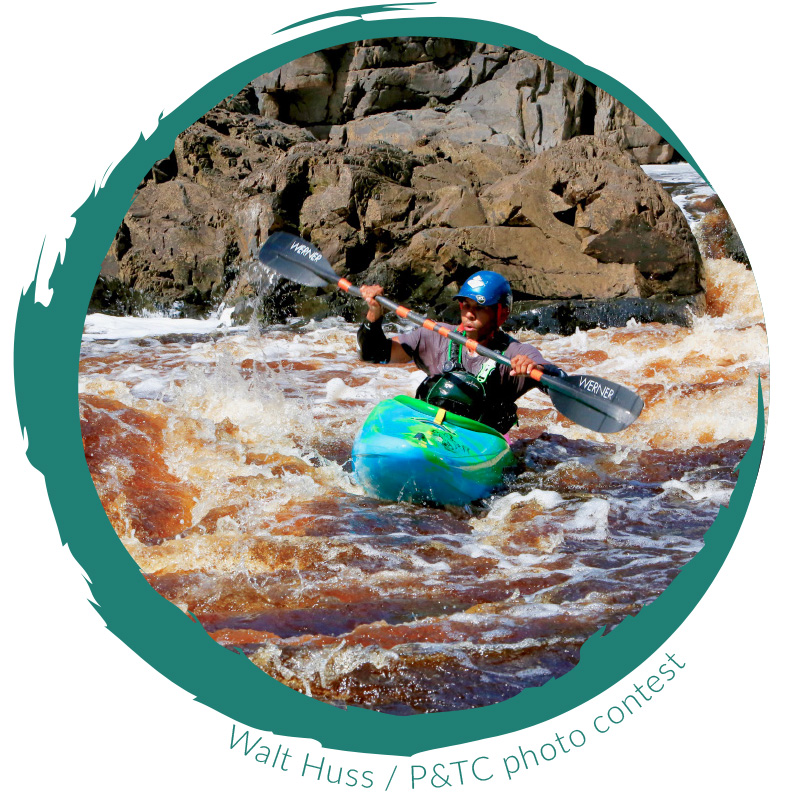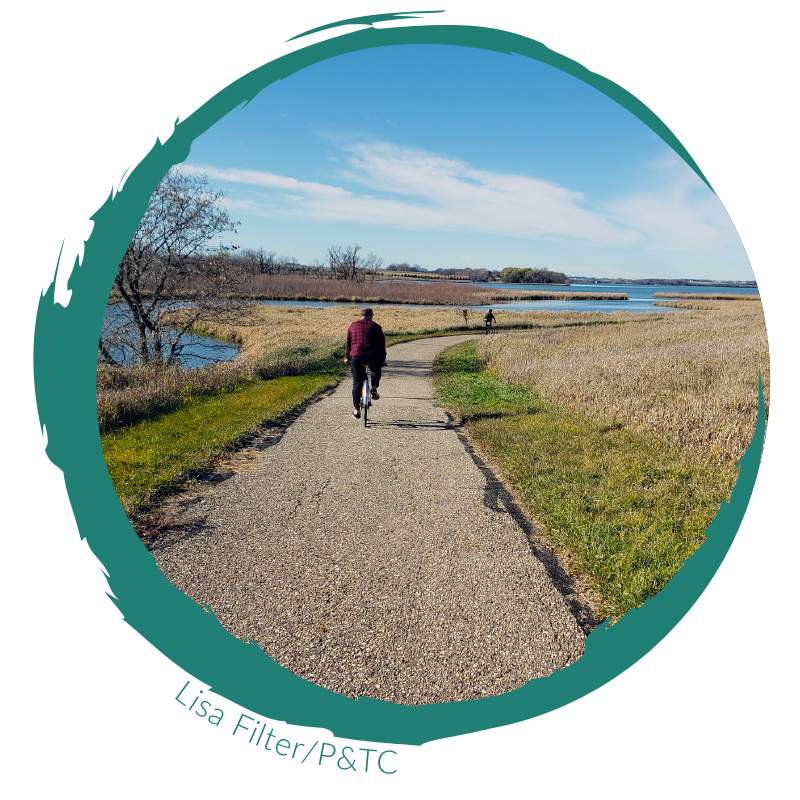We encourage increasing the funding to Minnesota State Parks and Trails.
Minnesota has a projected $17.6 billion surplus on top of billions in federal aid. Meanwhile, funding for Minnesota’s State Parks and Trails has not kept up with a growing system and increased demand. Investing a small portion of this surplus into Minnesota State Parks and Trails and building that increase into the general fund base would make a big difference. It would ensure that these valuable natural places remain well cared for and open to all now and in the future.
